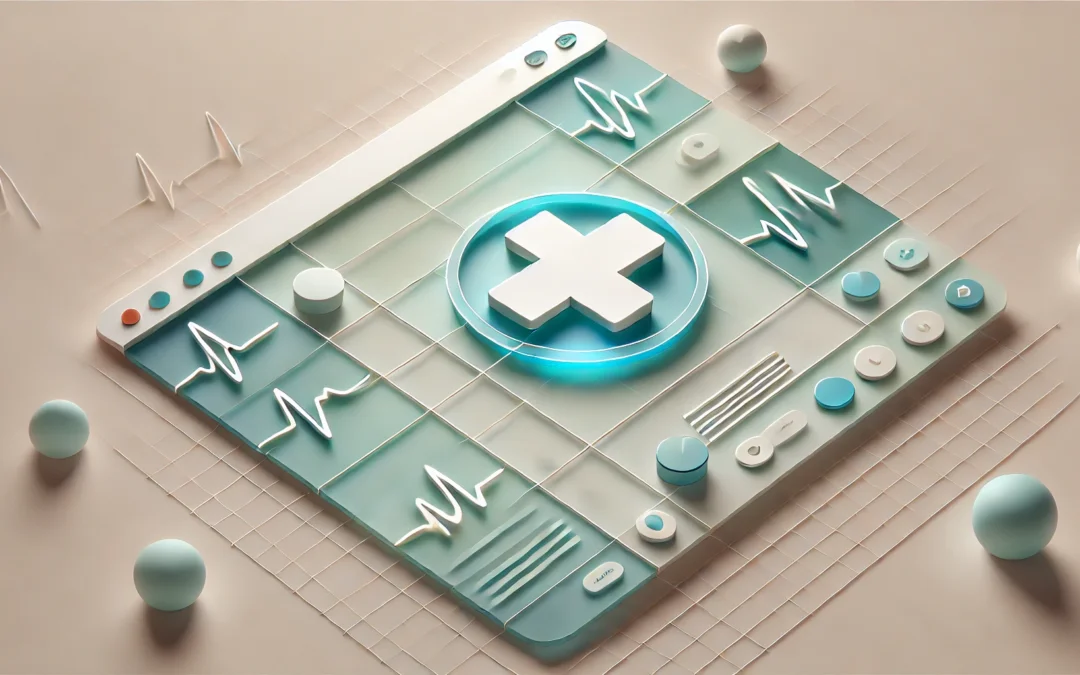Want to make your healthcare website stand out? Here are 5 key trends you need to know:
- Patient Self-Service Portals
- Video Visit Features
- Health Data Charts and Graphs
- Mobile-Ready Design
These trends are reshaping how patients interact with healthcare providers online. Let’s break them down:
- Patient portals let users book appointments, manage prescriptions, and access records 24/7
- Video visits became huge during COVID and are here to stay
- Visual data helps patients understand complex health info
- Mobile-friendly sites are a must – 40% of patients use portals on smartphones
- Tight security protects sensitive data from breaches
The takeaway? A great healthcare website isn’t just about looks. It’s about giving patients the tools to manage their health easily and securely.
1. Patient Self-Service Portals
Patient self-service portals are changing the game for healthcare websites. They’re like a digital Swiss Army knife for patients, letting them manage their health info and chat with doctors all in one place. For healthcare providers, these portals are becoming a must-have to keep patients engaged and operations smooth.
Patient Engagement Tools
Today’s portals aren’t just about checking your basic health info. They’re packed with cool features that put patients in the driver’s seat:
- Online Scheduling: Turns out, the majority of patients would book their appointments online if they could. It’s especially big with the younger crowd.
- Prescription Management: Need a refill? No problem. Patients can order meds, check their history, and set reminders to take their pills on time.
- Medical Records Access: Users also prefer to be able to check their medical records online. Portals let them see lab results, X-ray reports, and doctor’s notes safely.
User Experience
A portal’s success boils down to how easy it is to use. Healthcare providers need to make sure everyone can use it, tech whiz or not.
This advice is spot-on for portal design. Here’s what to keep in mind:
- Intuitive Navigation: Keep it simple. Use clear language, not medical jargon.
- Mobile Optimization: Make sure it works smoothly on phones and tablets.
- Accessibility Features: Add options to change text size and support text-to-speech. Follow those Web Content Accessibility Guidelines (WCAG).
Security and Compliance
When it comes to health info, security is king. Healthcare providers need to lock down patient data and play by the rules.
- Multi-factor Authentication: Surprisingly, less than two-thirds of healthcare organizations use MFA for patient portals. It’s like adding an extra deadbolt to your front door.
- End-to-End Encryption: All data moving through the portal should be encrypted. It’s like sending your info in an unbreakable code.
- Regular Security Audits: Keep checking for weak spots. It’s like giving your security system a regular health check-up.
2. Video Visit Security and Compliance
Video visits have become a big deal on healthcare websites. However, keeping patient information safe is a must. Here’s how the best systems do it:
Follow the rules: All video systems for healthcare have to follow regulatory rules.
Lock it down: The best security uses end-to-end encryption. Only the people on the call can see what’s happening.
Get it in writing: Good telehealth companies sign agreements saying they’ll protect patient info.
Control who gets in: Strong login systems, like using a password and a code sent to your phone, keep the wrong people out.
Keep track: The system records who looks at patient info and when. This keeps everyone honest.
Remember, tech is just part of the picture.
3. Health Data Charts and Graphs
Healthcare websites are using data visualization to make medical information easier to understand. Let’s look at how health data charts and graphs are changing patient engagement and user experience.
Patient Engagement
Charts and graphs help patients grasp their medical info better. By turning numbers into visuals, healthcare providers can:
- Make complex data simple
- Get patients more involved in their health
- Explain medical concepts better than just text
Take Apple Health, for example. This app collects data from smart devices and shows it in easy-to-read charts. Users can see their daily steps, heart rate, and sleep patterns – all in a way that makes them want to engage with their health data.
User Experience
Making charts that are both informative and easy to use is key for healthcare websites. Here’s what to keep in mind:
- Design should be easy to understand
- Add interactive features
- Make sure it works well on all devices
To create effective health data charts and graphs:
1. Pick the right chart type
Use line charts for trends over time, bar charts for comparisons, and pie charts for showing proportions.
2. Use color wisely
Use colors to highlight important data and make charts look good. For example, use blue for cold and red for hot in temperature maps.
3. Give context
Add clear labels, legends, and short explanations to help users understand the data.
4. Let users customise
Allow users to filter data or change time ranges to see the info they want.
4. Mobile-Ready Design
In today’s world, healthcare providers can’t ignore mobile users. More patients are using smartphones for health info and services. So, a mobile-ready design isn’t just nice to have – it’s a must.
User Experience
A mobile-ready design lets patients use all features easily, no matter what device they’re on. Here’s why it’s crucial:
Works on All Devices: Your healthcare website needs to work well on phones, tablets, and computers. This means using responsive design.
Easy to Navigate: On smaller screens, keep it simple. Patients should find what they need fast. Big, clear buttons for things like “Book Appointment” or “Contact Us” make a big difference.
Loads Quickly: Mobile users want speed. Slow pages can annoy patients, especially in emergencies. Make your images smaller and clean up your code to speed things up on mobile.
Patient Engagement
Mobile-ready design isn’t just about looking good – it’s about keeping patients involved in their health care.
Patient Portals on the Go: Mobile-friendly patient portals are a big deal. They allow users to check health records, set up appointments, and message doctors – all from their phone.
More People Use It: When patient portals work well on mobile, more people use them.
Better Communication: Mobile design helps patients and doctors talk better.
To make your design mobile-ready:
- Use responsive frameworks so your site looks good on all devices.
- Make images and videos work for different screen sizes.
- Design forms and buttons that are easy to tap on mobile.
- Make sure text is easy to read without zooming on small screens.
- Test your site on different devices and browsers often.
Conclusion
The digital shift in healthcare is changing how providers connect with patients. Let’s look at why these website design trends matter for healthcare providers.
Healthcare websites are now the digital front door for medical practices. They’re often the first place new and returning patients go. A good website doesn’t just engage patients – it makes operations smoother, improves access, and helps providers reach more people.
Here’s a quick recap of the trends we’ve covered:
1. Patient Self-Service Portals
These portals give patients more control over their health. They can schedule appointments and manage prescriptions online.
2. Video Visit Features
Video visits became huge during COVID-19. They’re convenient and make healthcare more accessible. But remember, it’s not just about the tech – it’s about building trust and showing empathy, even through a screen.
3. Health Data Charts and Graphs
These visuals help patients understand complex medical information.
4. Mobile-Ready Design
With so many people using smartphones, your website MUST work well on mobile. If your website isn’t mobile-friendly, you’re missing out.
The future of healthcare websites looks bright. The global digital health market made about $180.2 billion in 2023. By 2028, it could hit $549.7 billion. That’s huge growth, showing how important digital tools are becoming in healthcare.
To do well in this digital age, healthcare providers should:
- Put money into good website design and keep it updated
- Use data and AI to create personalised experiences for patients
- Make telehealth and digital health services a big part of their plan
- Create helpful content to build trust with patients
- Make sure their websites show up in Google searches – that’s where many patients look for health info first

